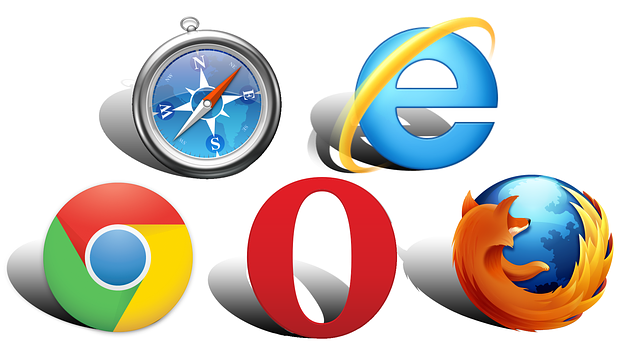What’s New, What’s Next: The Future of the App Economy
The app economy is massive. In fact, it’s one of the fastest-growing industries in the world. Web and mobile app users continue to spend more time on their apps and download more new apps than ever before. But what does the future of this booming industry look like? How will it evolve over the next few years? Let’s take a look at some of the things that are new and coming soon in the app economy.
Augmented Reality Apps Will Be Everywhere
One of the more exciting changes in the app economy will be the rise of augmented reality apps. We’ve already seen a few of these apps, such as the app that lets you try on makeup or the app that lets you build virtual furniture in your home. AR apps are only going to become more prevalent in the future. The technology for creating AR apps is only improving, and it’s becoming less expensive for developers to create AR apps for customers. Plus, AR is being integrated into more and more apps, so it’s likely that we’ll see more users downloading and using AR apps. AR will also likely have a bigger impact on the app economy in other ways, such as leading to a change in how we buy products. AR is already making it easier for customers to preview furniture, picture frames, and other home goods. So, it’s not a stretch to imagine the technology being used to let customers see what products look like in their homes, as well as letting them try out different styles and sizes. This could change how we shop, allowing customers to test out products before they buy them, and it could also lead to a drop in returns since customers will know if something will fit or look right in advance.
The Rise of The Internet of Things
Another big change in the app economy will be the rise of the internet of things. This refers to the growing number of devices that have internet connectivity and can communicate with each other. For example, a smart thermostat that can connect to your phone, or smart light bulbs that can be controlled through an app. The internet of things is expected to be a $20 trillion industry by 2030, and a lot of that growth will be seen in the app economy. New apps, as well as new versions of existing apps, will be created in order to control these connected devices. This will lead to a huge increase in the number of devices app developers will have to design their apps to work with. Many of these devices don’t have much processing power, so it’s likely we’ll see more apps designed to work with fewer devices, as well as apps that work in the cloud rather than on the device itself, making them easier to scale across devices.
More Apps Becoming Platforms
Another major change we’ll see in the app economy is that more apps will become platforms. For example, apps designed around games will often allow users to create their own custom levels. These apps are considered platforms, and they allow users to create their own content and share it with other users. The popularity of other apps, such as blogging platforms, suggests that more apps will become platforms. Blogging apps like WordPress allow people to create and publish their own blogs, and those blogs can link to other blogs or websites. This type of functionality is increasingly being seen in apps for social media and content creation. We’ve already seen apps such as TikTok allow users to create their own custom content and share it with other users. More apps like these are likely to become more popular in the future. This could also lead to changes in how we discover new content.
Chatbots Will Continue to Grow
Chatbots have been a major part of the app economy for some time now. They’ve been used to provide customer service, help you schedule appointments, and even order food. We’ve even seen chatbots used to write articles for publications, and there are even bots that can write your app’s code for you. Chatbots are only going to become more popular in the future. There are several reasons that chatbots are likely to continue growing in popularity. One important reason is that chatbots are relatively inexpensive to create, and they’re simple enough to be programmed by almost anyone. This means that they’re an ideal solution for small businesses that don’t have a lot of money to spend on development.
Virtual and Augmented Reality Will Become Bigger
Virtual reality and augmented reality have been growing in popularity ever since the first VR headsets were released. There are now a variety of headsets available, and we’ve also seen more AR apps, such as the app that lets you create custom Bob Ross paintings. VR and AR apps are only going to become more popular in the future, especially as VR headsets become less expensive. VR and AR are expected to become much more mainstream in the next few years, with over 80% of people in the US have tried VR, and AR being used in industries like healthcare. Wearable computing devices, such as AR gloves, will continue to improve and become more affordable, making it easier for businesses to create new VR and AR apps.
Apps Will Focus on Improving Security
As more apps are created, and as we see apps become more popular in industries like healthcare, it’s likely that we’ll see apps focus more on security. Some apps already do this, but as more critical apps are created, and as more sensitive data is stored in apps, we’ll see more apps designed with security in mind, rather than added as an afterthought. As more apps work with sensitive data, they’ll need to be designed with security in mind. This means that they’ll need to use the latest security features, like two-factor authentication, they’ll need to be tested for vulnerabilities, and they’ll need to offer protection against hackers. This means that we’ll likely see more apps that are hard to navigate, but much more secure.
Windows Apps and Android Apps Will Merge Together
Microsoft’s app economy has been growing steadily, particularly with their office apps, and the number of people using their platforms has been steadily increasing. But, with Android’s app economy also growing, and the two platforms being increasingly used together, it’s likely that the two will merge together. It’s likely that the two platforms will be combined in different ways, with apps for Android and Windows being offered for both platforms, and apps for Windows also being available on Android. This could happen in a number of ways, such as by making Android apps available on Windows, or vice versa, or by making it easier for developers to create one app that works on multiple platforms. This could change how we use apps and how we discover new apps, but it could also make it easier to use apps across multiple devices.
Apps are moving beyond your phone.
While smartphones are still the most popular way to access apps, they’re not the only way. We’ve already seen the rise of smart TVs and other connected devices that can run apps, such as gaming consoles. We’ve also seen new devices, such as the Amazon Echo or Google Home, that are designed for voice commands and can run apps. As more and more devices become available that can run apps, it’s likely that we’ll see more people using apps across multiple devices. This could change how we use apps since some of these devices don’t offer the same functionality as a smartphone. It’s also likely that we’ll see more apps created that work across multiple devices. This could be done by creating apps that work across devices, or it could be done with apps that are designed to work on only a few machines but be accessed across many devices.
Conclusion
The app economy is massive, and it’s growing every year. New apps are being created, existing apps are growing in popularity. The future of the Mobile App economy appears to be more than promising. Furthermore, it has something for almost every business sector. As a result, no business, whether B-to-C or B-to-B, should pass up the opportunity to increase sales and revenues by utilizing the relatively simple yet rewarding marketing tool that modern-day Mobile Apps have evolved into!




